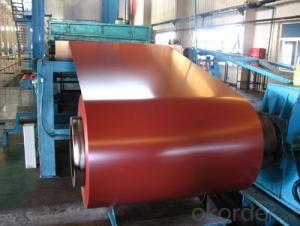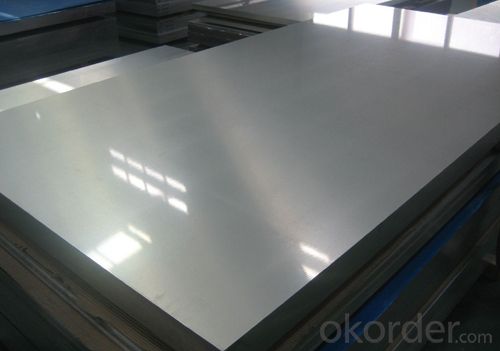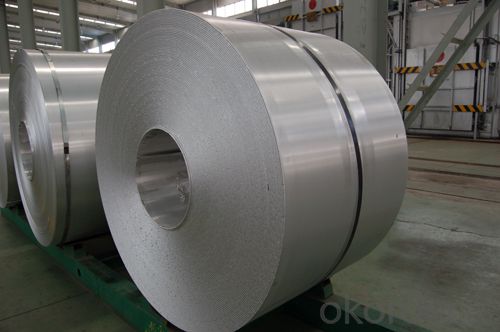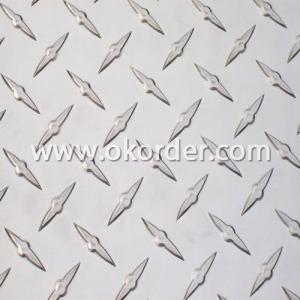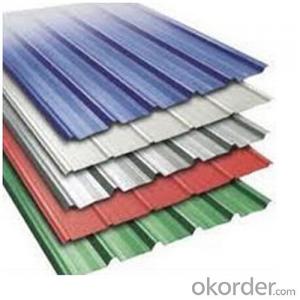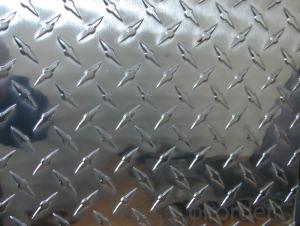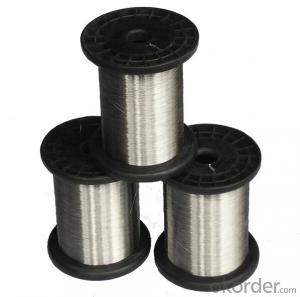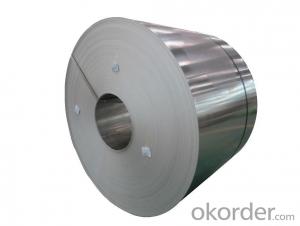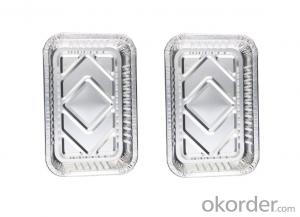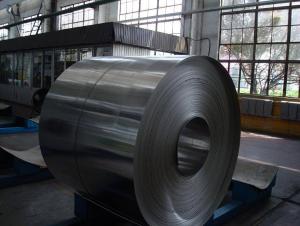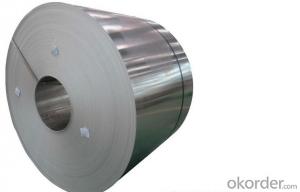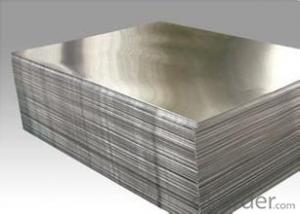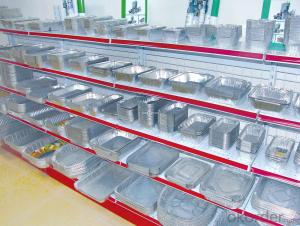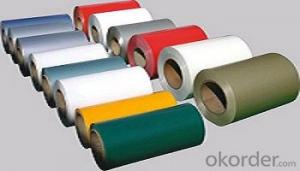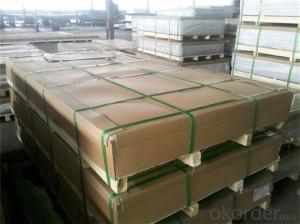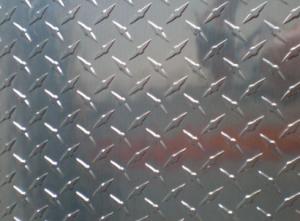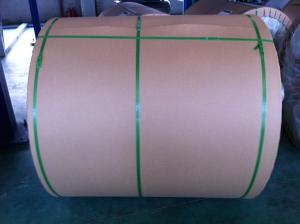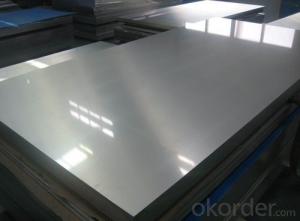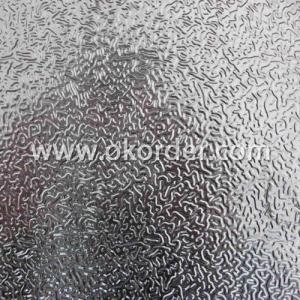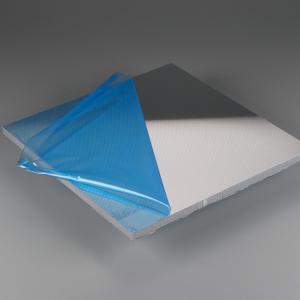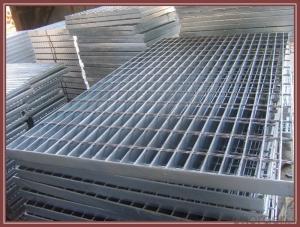29 Gauge Aluminum Sheets for Variety Application in Different Alloy
- Loading Port:
- Shanghai
- Payment Terms:
- TT OR LC
- Min Order Qty:
- 20 m.t.
- Supply Capability:
- 100000 m.t./month
OKorder Service Pledge
OKorder Financial Service
You Might Also Like
Specification
1. Specification of Aluminum
1) Alloy | 1050, 1060,1100, 3003 3004 3105 3005 5005 5052 etc |
2) Temper | O/H12/H14/H1/H18/H32/H34/H36/H38//H111/H112/H116/H321/T6/T651/T3/T351 etc |
3) Thickness | 0.1mm to 6mm |
4) Width | 20mm to 3300mm |
5) Coil weight | 100kgs to 6 tons depends on actual requirement |
6) Core material | Aluminum alloy |
7) Coil Inner diameter | 76mm, 152mm,or as required |
2. Application of Aluminum
In automobiles, aluminum is used in car bodies, bumpers, suspension mounts and dozens of other places. Aluminum is about more expensive than steel by weight, but is about 40 percent lighter. Manufacturers still rely on steel for components such as the chassis and the body, but for other parts, there is a clear tradeoff when it comes to using aluminum.
3. Feature of Aluminum
The many aluminium compounds with niche applications include aluminium acetate, a salt used in solution as an astringent, aluminium borate (Al2O3·B2O3) andaluminium fluorosilicate (Al2(SiF6)3) which are used in the production of glass and ceramics and synthetic gemstones and aluminium phosphate (AlPO4) used in the manufacture of glass, ceramic, pulp and paper products, cosmetics,
4. Certificate:
SGS and ROHS(if client request, paid by client), MTC(plant provided), Certificate of Origin(FORM A, FORM E, CO), Bureau Veritas and SGS (if client request, paid by client), CIQS certificate
5. Image of Aluminum
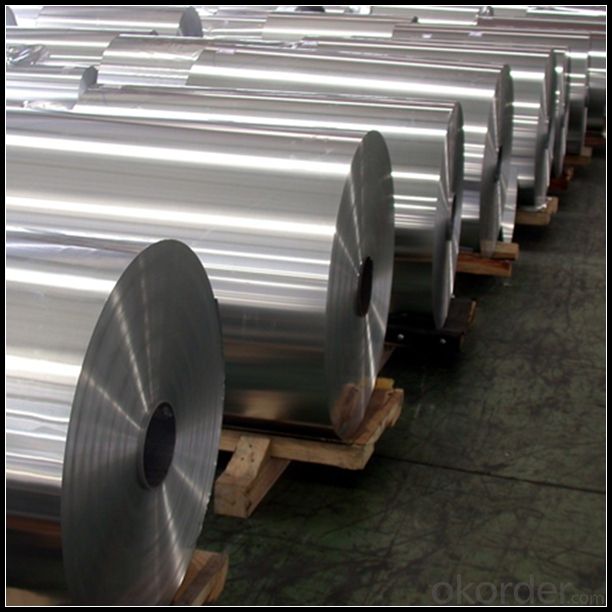
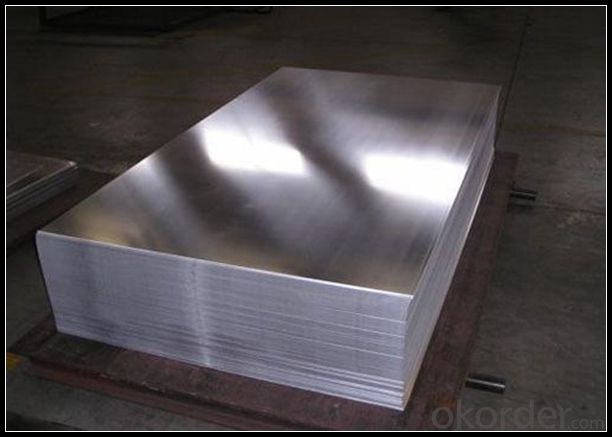
6. Our Service
1. Reply your enquiry in 24 working hours. |
2. OEM, buyer design, buyer label services provided. |
3. Exclusive and unique solution can be provide to our customer by our well traned and professional engineers and staffs. |
4. We can provide free sample for your check |
5. We have the certification of ISO 9001 |
6. Timely delivery |
7. Special discount and protection of sales area provided to our distributor. |
8. Good after-sale service. |
7. FAQ
Q: What is the produce prase? | ||||
A: Normally it would be 40days after received your deposit. | ||||
Q: Can you provide free samples? | ||||
A: Yes, free samples will be sent to you on freight at destination. | ||||
Q: Can I get your latest catalogue? | ||||
A: Yes, it will be sent to you in no time. | ||||
Q: What is the MOQ? | ||||
A: 3 tons | ||||
Q: What are your payment terms? | ||||
A: We accept L/C, D/A, D/P, T/T, West Union,etc. |
- Q: Can aluminum sheets be used for heat shields in appliances?
- Appliances can utilize aluminum sheets as heat shields. Aluminum, being a lightweight and highly conductive material, effectively disperses heat. Its ability to withstand high temperatures is due to its high melting point, making it an ideal material for heat shield purposes. Furthermore, aluminum's corrosion resistance guarantees the durability and longevity of the heat shield. Its flexibility enables easy installation and shaping to accommodate different appliance designs. Aluminum sheets find widespread use in appliances like ovens, grills, and heating units as a safeguard against excessive heat, preventing potential damage to surrounding areas.
- Q: How do aluminum sheets perform in terms of thermal insulation?
- Aluminum sheets have poor thermal insulation properties. They conduct heat very well, which means they are not effective in preventing heat transfer between different areas or maintaining a consistent temperature.
- Q: This question asks about the various types of aluminum sheets that are suitable for use in exterior applications, specifically those that can withstand outdoor conditions.
- <p>Aluminum sheets used for exterior applications come in various types, each with specific properties to withstand weather and environmental conditions. These include: 1. Mill Finish Aluminum Sheets: These have a natural aluminum finish and are used for applications requiring a raw, industrial look. 2. Anodized Aluminum Sheets: These are aluminum sheets that have been treated to increase their resistance to corrosion and wear. 3. Painted Aluminum Sheets: These are coated with a layer of paint for added protection and aesthetic appeal. 4. Embossed Aluminum Sheets: These have a textured surface and are used for decorative purposes or to provide a non-slip surface. 5. Perforated Aluminum Sheets: These are aluminum sheets with holes punched through them, used for ventilation or decorative purposes. Each type is chosen based on the specific requirements of the exterior application, such as durability, aesthetics, and environmental resistance.</p>
- Q: This question asks for methods to maintain a smooth and even surface finish on an aluminum sheet after it has been installed.
- <p>To ensure a smooth and even surface finish on an aluminum sheet after installation, follow these steps: 1. Choose high-quality aluminum sheets with a consistent thickness and surface texture. 2. Use appropriate cutting and shaping tools to avoid scratches and deformations. 3. Clean the surface thoroughly before installation to remove any dirt or debris. 4. Apply a protective coating or sealant if necessary, following the manufacturer's instructions. 5. Install the aluminum sheet using proper techniques and hardware to avoid warping or unevenness. 6. Inspect the surface regularly for any signs of wear or damage, and address them promptly. By following these steps, you can maintain a smooth and even surface finish on your aluminum sheet after installation.</p>
- Q: Are aluminum sheets suitable for automotive body panels?
- Yes, aluminum sheets are suitable for automotive body panels. Aluminum is lightweight, corrosion-resistant, and strong, making it an ideal material for manufacturing car body panels. It helps improve fuel efficiency, enhances performance, and reduces overall vehicle weight, making it a popular choice among automakers.
- Q: This question asks whether it is possible to utilize stamped or embossed aluminum sheets for a specific project.
- <p>Yes, you can use stamped or embossed aluminum sheets in your project. These sheets are known for their strength, durability, and lightweight properties, making them ideal for various applications such as construction, automotive, and aerospace. Stamped aluminum sheets are formed by pressing the material into a specific shape, while embossed sheets have a raised pattern. Both types offer design flexibility and can be customized to meet specific project requirements. Ensure that the aluminum sheets you select meet the necessary specifications for your project, such as thickness, strength, and finish.</p>
- Q: I'm buying a sword this afternoon for about 100 bucks i'm using it mainly to take pictures of and hang it on my wall. I looked up tips about buying swords and i think the sword i want is made out of aluminum. Could i use this sword as protection on an armed robber who would break into my house?
- Nothing wrong with buying a wall hanger. In a worst case scenario: sure. Pointy end goes into the other guy. But you are far better off with a kitchen knife, that has a whole lot less chance of breaking or shattering and injuring you, plus you don't need any room with it. Against an armed robber, more than likely you would get killed. Sword work even for guys trained with it, doesn't work great in tight spaces like halls. Having zero training with a sword and attempting to use it, will more than likely result in your injury even if you were just playing around and not attempting to fight for your life. If you are truly interested or worried about home protection, a shotgun is best, a handgun would be next, and even then some time at the range and some qualified instruction is needed. As a last resort matter of life or death, you are scrambling and only your wall hanger is available, sure it gives you a slight edge over being unarmed (maybe). It also hampers you, it ties up both of your hands, it requires space to use, and more than likely would break or severely bend the first time it contacts anything hard, it also elevates your threat level to an armed robber. Meaning he will be more willing to shoot you fearing his life is in danger. Or it could go the other way completely and scare the guy off... no telling. I wouldn't rely on it as a sole means of home protection, or even as an item of last resort (again see kitchen knife). For home protection, get a dog, get an alarm, and get a gun. Shotgun is point and shoot, without a lot of worry of penetration through walls and such injuring other members of your house. Handgun requires some training but is very effective. I can tell you that the unique sound of racking a shell on a pump action shotgun is a very effective intimidator and deterrant.
- Q: How do aluminum sheets perform in terms of formability?
- Aluminum sheets are known for their excellent formability. They can be easily shaped and bent into various complex forms without cracking or breaking. The high ductility and malleability of aluminum allow it to be formed into different shapes, curves, and angles with relative ease. This formability makes aluminum sheets highly versatile in applications such as automotive body panels, aircraft components, and architectural structures. Additionally, aluminum sheets have good resistance to corrosion, further enhancing their performance in various environments. Overall, aluminum sheets provide a combination of formability, strength, and durability, making them a popular choice in numerous industries.
- Q: What is the typical electrical conductivity of aluminum sheets?
- Aluminum sheets typically exhibit an electrical conductivity ranging from 35.0 to 45.0 MS/m (mega siemens per meter) or 35,000 to 45,000 S/m (siemens per meter). Renowned for its exceptional electrical conductivity, aluminum possesses approximately 61% of the conductivity found in copper. As a result, aluminum is extensively used in diverse electrical applications, including wiring, power transmission lines, electrical busbars, and electrical equipment components. The conductive nature of aluminum facilitates the seamless and dependable flow of electric current, rendering it an invaluable material within the electrical industry.
- Q: What's the price of the 6mm aluminum sheet?
- The single aluminum plate is aluminum substrate, around the hem (can be customized size and shape) and install bracket forming a mounting edge, the surface of the fluorocarbon coating (various colors can be customized).
Send your message to us
29 Gauge Aluminum Sheets for Variety Application in Different Alloy
- Loading Port:
- Shanghai
- Payment Terms:
- TT OR LC
- Min Order Qty:
- 20 m.t.
- Supply Capability:
- 100000 m.t./month
OKorder Service Pledge
OKorder Financial Service
Similar products
Hot products
Hot Searches
Related keywords
